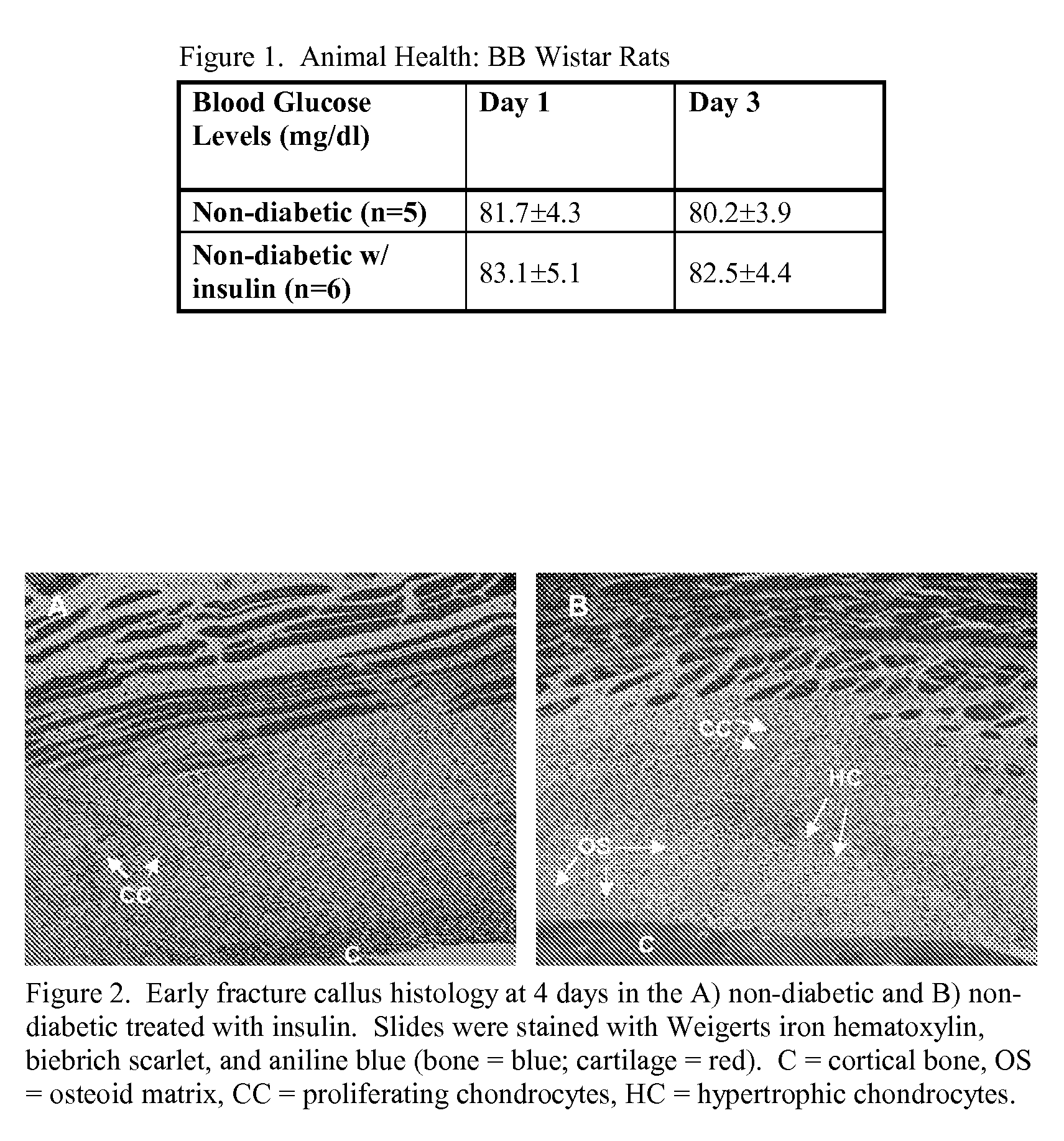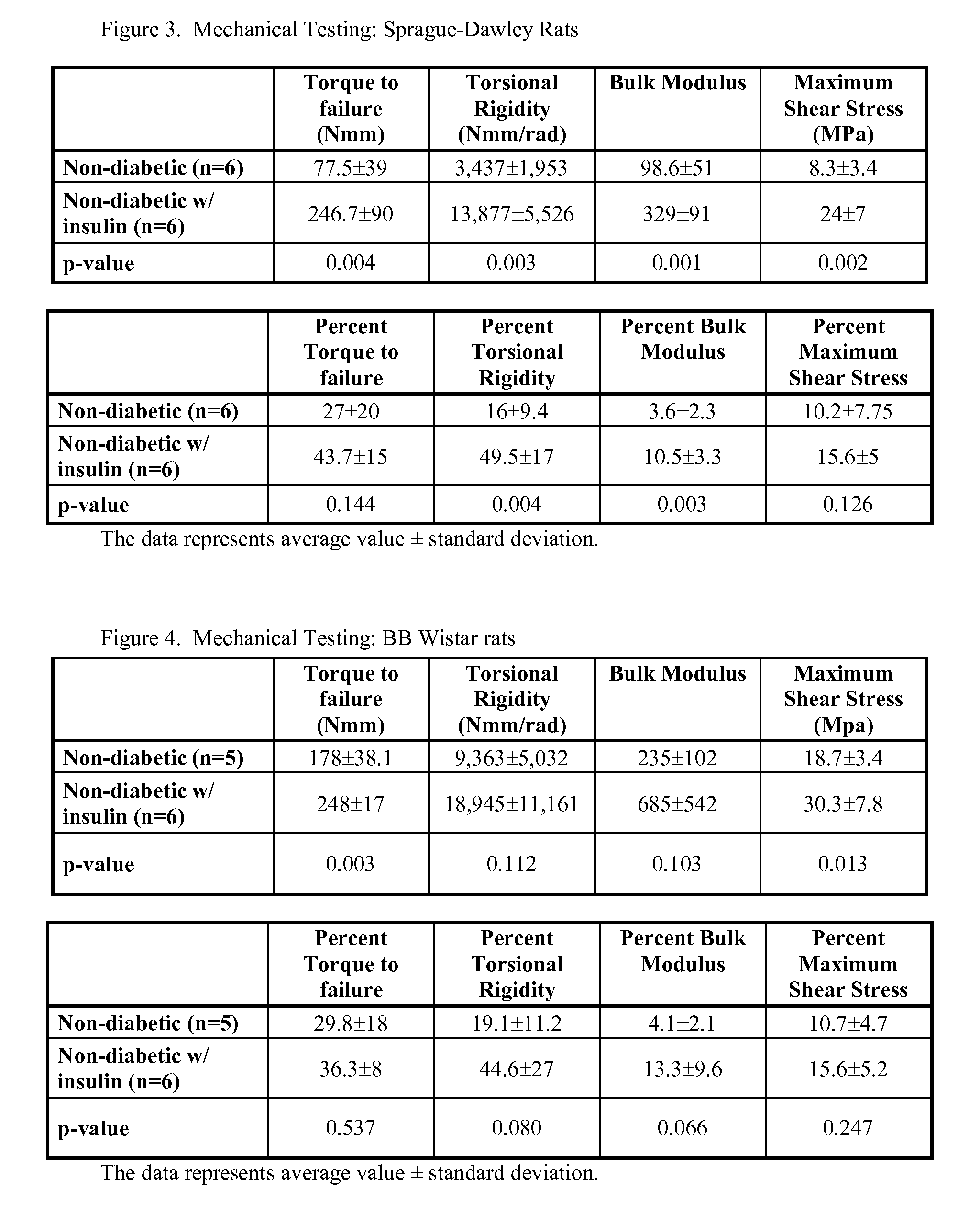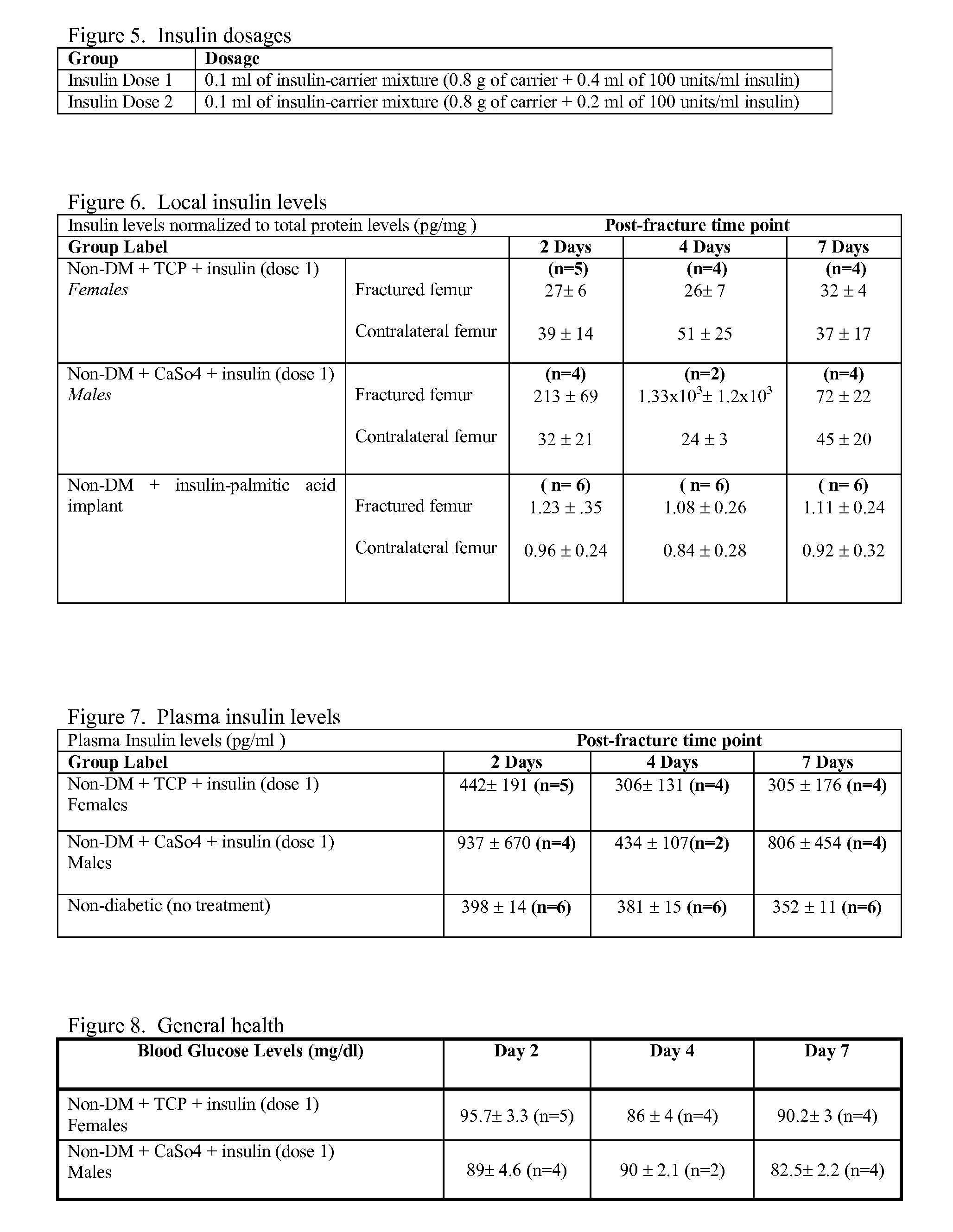Localized insulin delivery for bone healing
a localized insulin and bone healing technology, applied in the direction of inorganic non-active ingredients, drug compositions, peptides, etc., can solve the problems of preventing a definitive conclusion regarding the anabolic effect, affecting bone healing clinically, and affecting bone healing, so as to accelerate bone healing
- Summary
- Abstract
- Description
- Claims
- Application Information
AI Technical Summary
Benefits of technology
Problems solved by technology
Method used
Image
Examples
example 1
Results
[0060]The blood glucose levels between the BB Wistar non-diabetic and non-diabetic treated with local insulin groups were comparable at days 1 and 3 post-surgery (FIG. 1). These results indicate that the injection of insulin into the intramedullary canal of the fractured femur does not alter systemic blood glucose.
[0061]At day 4, the insulin treated BB Wistar group showed the presence of proliferating and hypertrophic chondrocytes while the untreated BB Wistar group showed only the presence of proliferating chondrocytes (FIG. 2). In addition, osteoid matrix was present in the day 4 callus in the insulin treated group but not in the untreated group. The presence of hypertrophic chondrocytes at day 4 in the insulin treated group demonstrates an acceleration of the fracture healing process.
[0062]The insulin treated Sprague-Dawley group displayed improved mechanical properties of the fractured femora compared to the untreated group (FIG. 3). The torque to failure, torsional rigid...
example 2
Results
[0076]The blood glucose levels between the BB Wistar non-diabetic+TCP+insulin and non-diabetic+CaSo4+insulin groups were comparable at days 2, 4 and 7 post-surgery (FIG. 8). These results indicate that the injection of insulin into the intramedullary canal of the fractured femur does not alter systemic blood glucose.
[0077]The insulin+TCP treated BB Wistar group displayed improved mechanical properties of the fractured femora compared to the Saline+TCP group (FIG. 9). The torque to failure, torsional rigidity, shear modulus and the maximum shear stress were increased with the local application of insulin.
[0078]The insulin (dose 1 & dose 2)+CaSo4 treated BB Wistar group displayed improved mechanical properties of the fractured femora compared to the Saline+CaSo4 group (FIG. 10). In the insulin dose 2 group, torsional rigidity was significantly increased, also considering the small sample size of the groups the torque to failure, sheer stress, and the maximum shear stress were s...
example 3
Results
[0092]Analysis of new bone formation in the periosteal bone (1), endosteal bone (2), defect bone (3), and total new bone (1+2+3) area demonstrated increased bone formation in the insulin-carrier group compared to carrier alone (FIG. 11).
PUM
| Property | Measurement | Unit |
|---|---|---|
| time | aaaaa | aaaaa |
| temperature | aaaaa | aaaaa |
| diameter | aaaaa | aaaaa |
Abstract
Description
Claims
Application Information
 Login to View More
Login to View More - R&D
- Intellectual Property
- Life Sciences
- Materials
- Tech Scout
- Unparalleled Data Quality
- Higher Quality Content
- 60% Fewer Hallucinations
Browse by: Latest US Patents, China's latest patents, Technical Efficacy Thesaurus, Application Domain, Technology Topic, Popular Technical Reports.
© 2025 PatSnap. All rights reserved.Legal|Privacy policy|Modern Slavery Act Transparency Statement|Sitemap|About US| Contact US: help@patsnap.com



